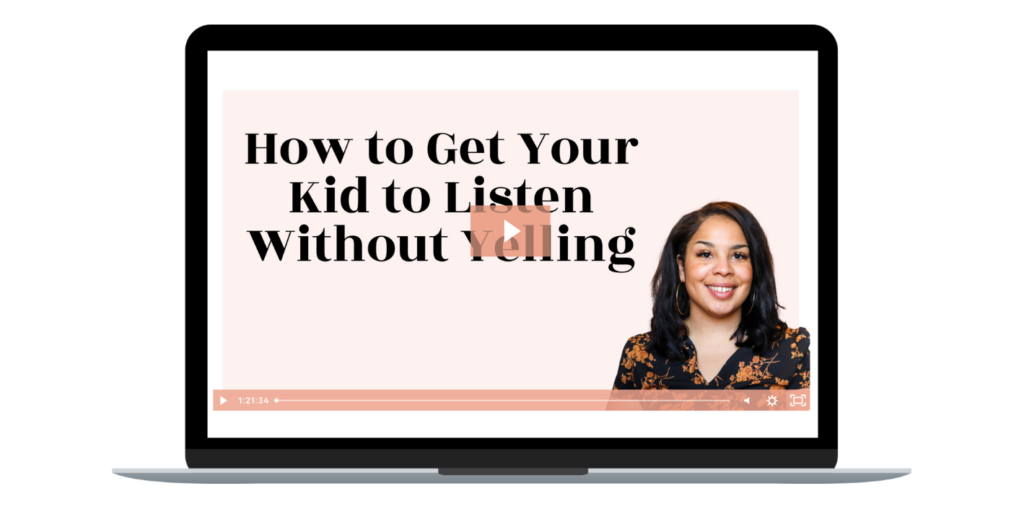watch now!
A place where I discuss all things related to toddlers and motherhood!
Subscribe to my Youtube channel
As a clinical psychologist, published author, and mother to two cheeky young children, I get it. I’ve spent YEARS researching and filtering through the noise online, so you don’t have to.
PARENTING TIPS
POTTY TRAINING
ANTIRACISM
PLAY
Blog Topics
SIBLING RIVALRY
SCREEN TIME
TANTRUMS
DISCIPLINE
Hi I'm Dr. Jazmine
Conflict Resolution for Kids: How to Do It and What to Say
topics:
In this blog, I’m going to answer some specific questions I’ve received from parents about conflict resolution.

What should you do when there is conflict between siblings during play?
The first question I received was from a mom who has a 3-year-old and a 1-year-old. She said she often finds the 3-year-old will bring toys up to the counters or the tables because their play is interrupted by the 1-year-old who wants to join in. But the 1-year-old doesn’t know how to and ends up interrupting the 3-year-old’s play.
This is a common situation.
I had this happen many times between my two kiddos. They’re 15 months apart, but for a while, Jayla, the youngest one, would come in and interrupt her sister Jaliyah’s play.
It’s okay for them to go to other places like counters and tables so that they can play more in-depth. We want to provide our children with plenty of opportunities to dive into their play because we understand that play is their form of work and their highest form of learning.
So when it’s constantly being interrupted, then essentially their learning is being interrupted. Give permission to your 3-year-old to play on their own and get their own space so their play is not interrupted.
The other thing is that you can also help your 3-year-old learn some assertiveness and some communication with the 1-year-old. It may not always work at this phase for the 1-year-old, but you can begin to give them words to use.
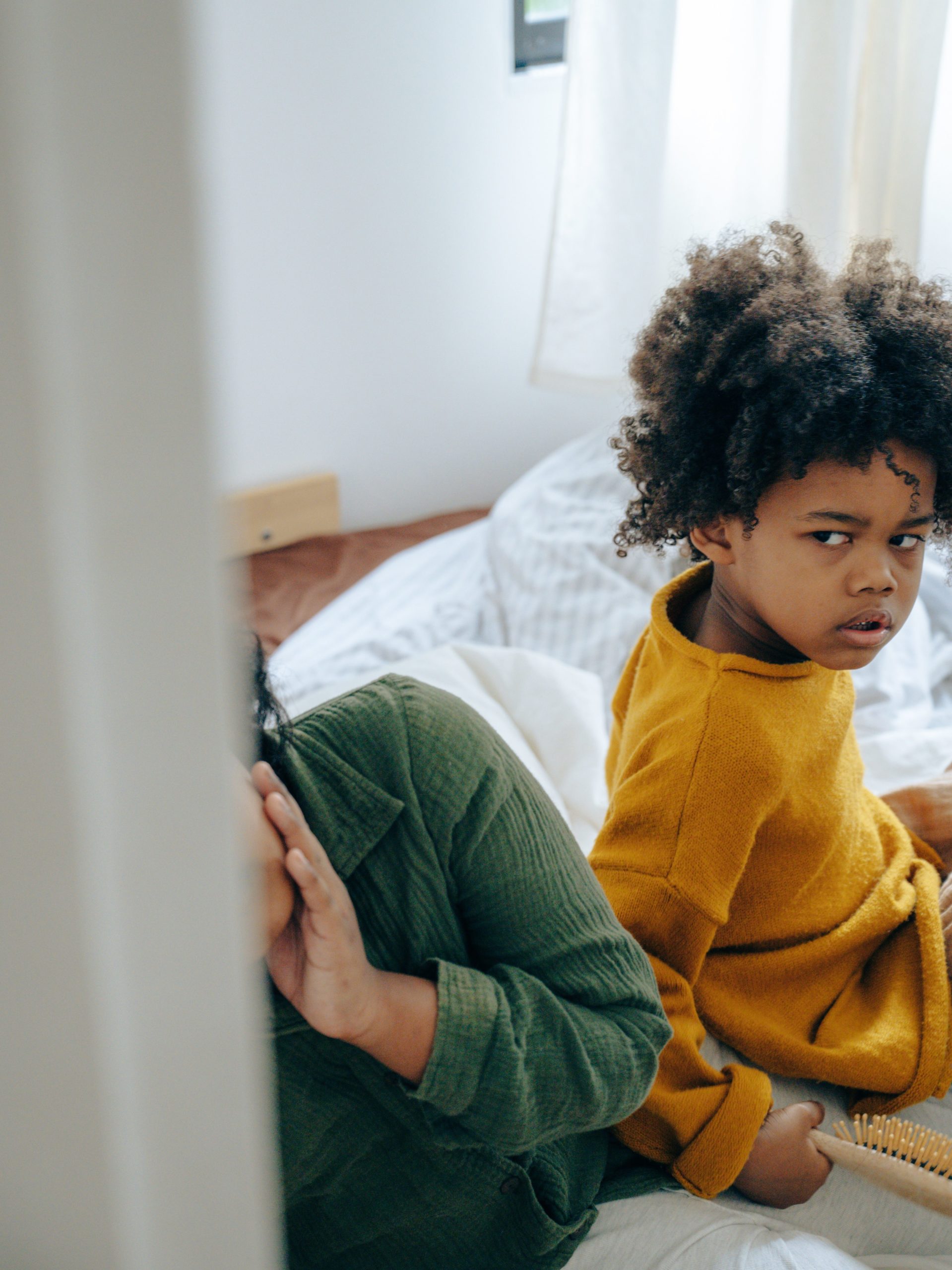
So, for example, if they’re working on a tower and the 1-year-old is about to come and knock it over, and the 3-year-old is saying, “No, no, no.” You can say something like…
- “I hear you saying no.”
- “What do you want him to stop doing?”
- “Oh, you don’t want him to knock over your tower.”
- “So instead of saying, ‘No,’ say to your brother, ‘Please don’t knock over my tower.’”
It’s important to give our children the language they need to communicate with others about what they need and what their wishes are.
This will help the 3-year-old learn how to set boundaries and express their needs and their wants. And it will help teach the younger sibling as well too.
Of course, this won’t always work. But it’s important to teach them the language to speak up for themselves.
Children can begin the process of conflict resolution around 2. But your child will need a lot of your help. They’ll need you to give them a lot of the words on what to say in the beginning.
This is a skill your child needs to thrive in school and in other settings where they need to speak up for themselves, hear what others have to say, and then come up with a solution that hopefully works for everybody.

What should you do when there is conflict from when a child uses a toy to hurt?
Another question I received was from a mom who has a 15-month-old, and she wanted to know what to do when they become aggressive with the toys. I’m assuming it’s something like throwing the toy or hitting somebody else with a toy or something of that nature.
So around 15 months, much of the discipline and limit setting is going to be through our guidance because their comprehension and language are not as developed as older kids. Plus, they’re not able on a cognitive level to resolve conflict. So you’re going to want to guide them through that. For example…
- Give your child a very specific instruction, like, “Please keep the toy in your hand” or “Please, use the toy this way” and show them how to use the toy.
- Give them another toy that’s more appropriate. If your child is throwing a toy, you can give them a soft ball to throw, or you can invite them to go outside and throw or bang stuff around. But you want to give them an avenue to express themself or to do that behavior in a safer way.
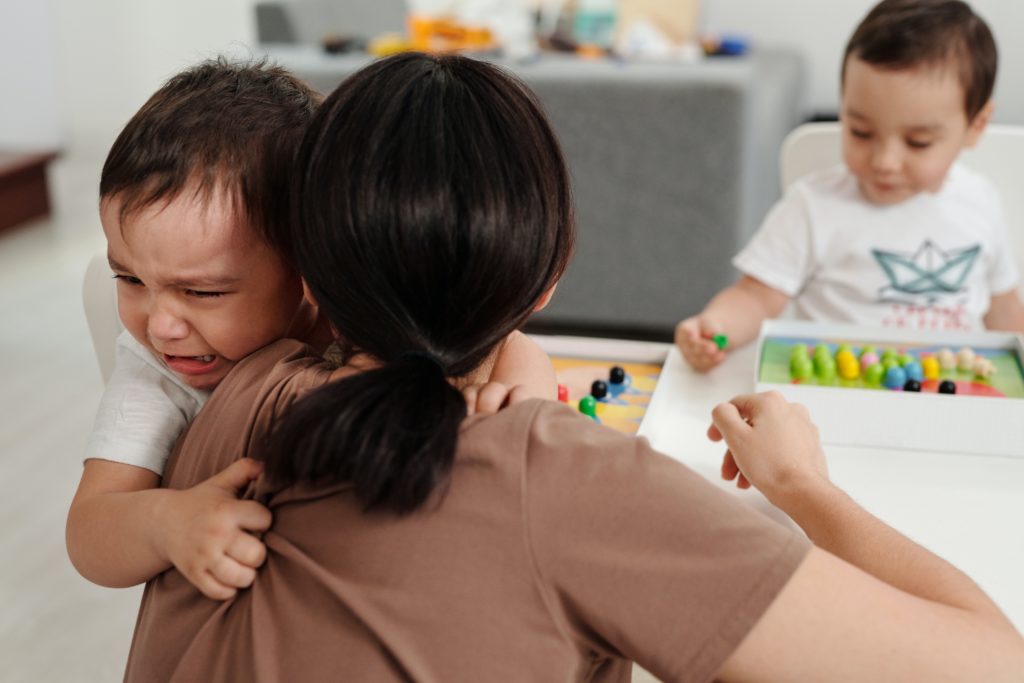
If it’s a situation where you’re not able to provide a different or an alternative solution and you need them to stop, your best solution is to say something like, “I’m going to help you.” Then you can either guide their behavior or remove the toy and explain to them it’s not appropriate.
Now if they’re hitting somebody with a toy, of course, you’re going to want to intervene. And you can say something like, “Oh, I’m going to help you. I can’t let you hurt. Toys are not for hurting.” And then you’ll want to put your hands out, put your body in between, and help redirect their behavior.
How do you comment instead of intervening during conflict between children?
Another question I received was about how to be comfortable commenting versus intervening during conflict.
I love this question because it already shows you’re mindful of the fact that more and more you want to take a step back and let your children work through the conflict because you understand conflict is normal. Throughout the day, you and your children will get plenty of opportunities to practice navigating conflict.
The basic rule is that as long as the behavior is not dangerous or aggressive, then it’s okay to take a step back. You know that it’s not an emergency, and they don’t need your immediate help.


Now that doesn’t mean that you don’t get involved or you don’t help guide them through the conflict. But it means you don’t need to be so quick to intervene and interject with what’s happening in the moment.
So all you do – as long as it’s not dangerous or aggressive – is describe what you see…
- “I see you threw sand, and brother didn’t like that.”
- “I see you threw the wood chips at him. And at first, he liked it. And now he’s saying, no, no, no.”
And then you can take it a step further by prompting them and say…
- “I hear you saying no. What would you like them to do? You want them to stop throwing. Tell them that. ‘I want you to stop throwing.’”
- If the child continues to have trouble with honoring the limits, you’ll want to say something like, “You need to stop throwing.” And then give it some time.
If they continue to test that boundary, you can say…
- “I see you’re having a hard time. I’m going to help you.” And remove them from the situation.
- Or give them two choices. “You have two choices. You can keep the sand in your hand or we’re going to have to move to a different area.”
If they have trouble stopping the behavior, that’s your cue they’re going to need you to step in and give some more guidance and redirect it.
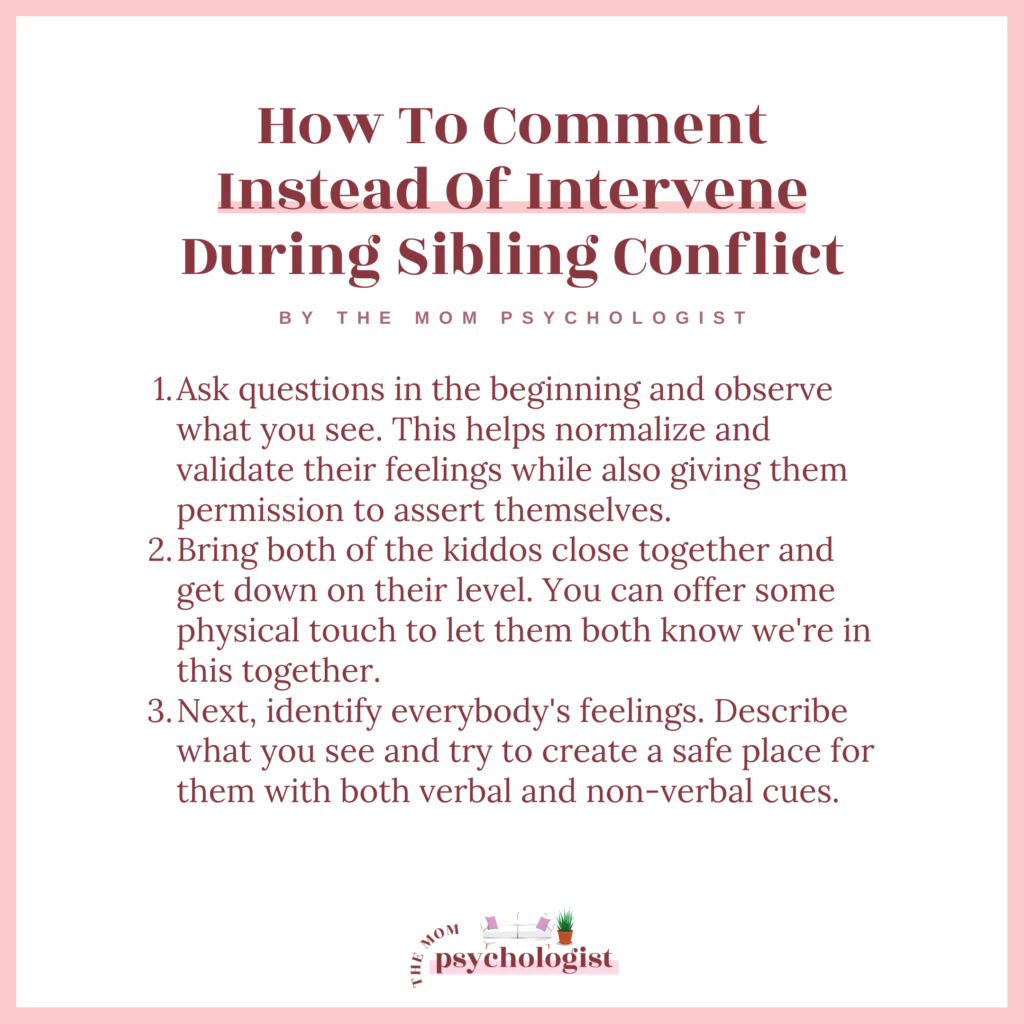
How do you solve the conflict if the kids can’t find a resolution?
I received another question that was what if they refuse to solve the conflict or there’s no resolution in sight.
Again, as much as possible, just describe what you see and then open it up.
- “What do you think we should do about this? Do you have any ideas?”

Sometimes our kids are going to need some ideas to help in either coming up with a resolution that’s going to work for both kiddos or for helping them communicate with the other child about their needs and wants. So there are times you’re going to have to feel it out and see how to proceed.
Let’s say both children are fighting for one toy. You’re going to want to describe what you see in a very neutral, non-judgmental way. And remember, as long as it’s not dangerous or aggressive, we don’t need to intervene and stop the behavior. It’s okay for them to have this push and pull with the toy as long as no one is getting hurt.
You can say something like…
- “I see both of you guys want the toy right now. I wonder what we should do about it.”
- And you can give a possible solution. “I’ve heard some kids have a waitlist for toys” or something like that, but allow it to play out.
If we give it some time, our kiddos will come to some solution, whether that’s the one child backing away from the toy and letting the other one have it. And then, if that’s the case…
- You’ll want to acknowledge and praise the child who shared.
- Let the other one know, “Hey, let your sister know when you’re done because I know that they really want to turn with that toy. Thank you, you two.”
- Keep it positive and upbeat.
How do you help a really young child with conflict resolution?
I received another question from a mom who has a 3-year-old and a 1-year-old. And her question was about how she can help her 1-year-old navigate these situations so that she’s not always getting on her 3-year-old.
I love that she’s so aware of not wanting to have high expectations of her 3-year-old. And she doesn’t want to take sides.
At 1-year-old, they’re a little too young to begin the conflict resolution process because their communication and comprehension are not as developed. But keep in mind when they turn 2, you can begin the process of conflict resolution.
But for the 1-year-old, it’s going to be a lot of redirection and guidance of their behaviors.
You can still explain out loud what’s happening. For example, the 3-year-old is building a tall tower, and the 1-year-old is coming up to the tower. The 3-year-old is getting upset about it possibly getting knocked over. You can…
- Put your hand out and say, “I can’t let you do that. I see your brother is building this nice tower. I am going to help you go around it.”
- Redirect the behavior and get them involved in a different activity as much as possible.
Now, of course, this is not always possible.

So let’s say the 1-year-old is coming up to the tower and the 3-year-old is like, “No!” The 1-year-old pushes the tower over, then you will want to describe what you see:
- You’re going to want to offer comfort to the 3-year-old and offer your focus to the 3-year-old. “I saw you were building the tower and then your brother came up and knocked it down. And now you’re feeling so sad, and you’re so disappointed. Yeah. I could see how you would feel that way.”
- Then you can say something like, “I wonder what we should do about it?” More times than not, they’ll decide to build the tower again. You can jump in to help them rebuild the tower to show your support and praise them for being flexible and understanding (e.g., “I know that was frustrating. I appreciate your understanding. Brother is still learning how to play in the ways you play. Would you like my help in rebuilding the tower?”).
It’s really important to convey to your 3-year-old that you understand where they’re coming from and that you know that this is frustrating.
Here are more conflict resolution tips!
Children can start understanding the conflict resolution process as early as 2 years old. Keep in mind for kiddos 6 and younger, they’re going to need your presence there more times than not. They’re going to need your help with having the language to assert themselves and to resolve the conflict successfully.

First, ask questions in the beginning and observe what you see. This helps normalize and validate their feelings while also giving them permission to assert themselves.
- “Did you like that when your brother did X, Y, and Z?”
You’re also going to want to bring both of the kiddos close together and get down on their level. You can offer some physical touch to let them both know we’re in this together.
- “We’re going to get through this. I’m not choosing sides. I want us to work through this.”
Next, you’re going to want to identify everybody’s feelings. Describe what you see and try to create a safe place for them with both verbal and non-verbal cues. Because if your children sense that you’re choosing sides or that you’re angry or annoyed with what’s happening, they will not feel comfortable talking about what’s going on.
- “Hey, we’re all in this together. Let’s see if we can find a solution that works for everyone.”
For kids younger than six, you’re going to want to invite them to tell the other child what they didn’t like.
- You’re going to want to give them those words to say to the other child. “I didn’t like when you pushed me. I didn’t like when you knocked my tower down. I didn’t like when you threw sand in my face.”
- Then you’re going to want to repeat that back. “So I heard you say you didn’t like that. Did you hear that too?” and get some feedback from the other child and you want to reinforce that boundary.
For older kids, you can say something like, “Tell them how you feel.”
If the other child has trouble respecting that boundary, then they will need your help. That’s your sign to connect with them, validate their feelings, and then try to redirect them to a different activity.
I hope this was helpful to help your kiddos learn the valuable skill of conflict resolution.
If you need more help with sibling conflict, I have a free workshop, How to Get Your Kids to Listen Without Yelling, where we work through discipline and setting consequences with intention and respect. I provide you with the tools you need to create a happy home where cooperation happens without the struggle.
Rooting for you,
Dr. Jazmine
Love this? Don’t lose it! Click below and save it to your Pinterest!
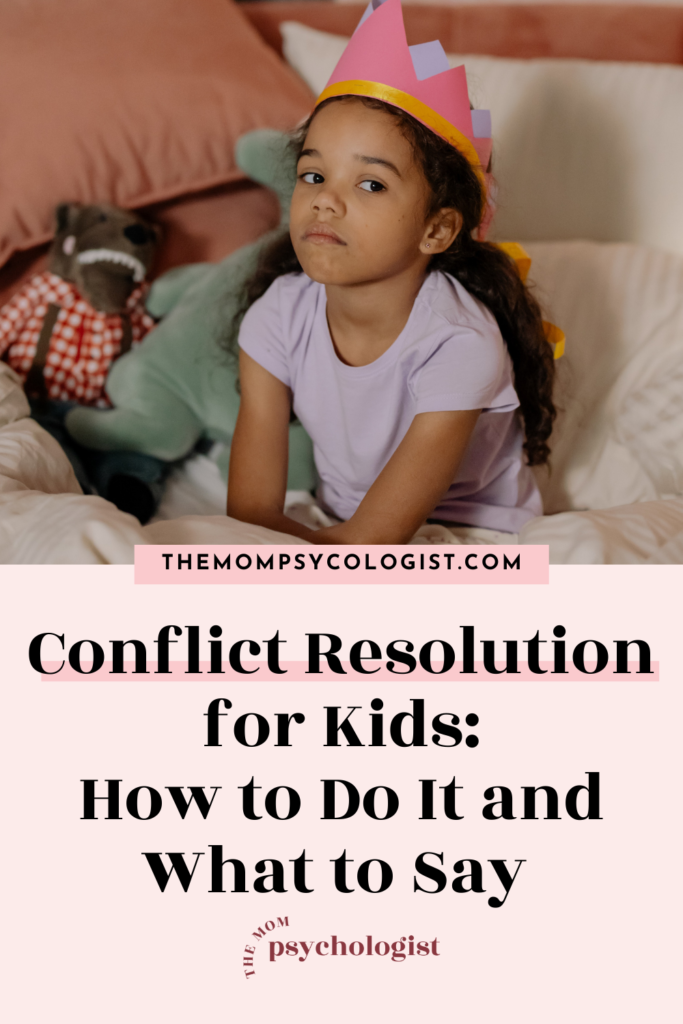
Leave a Reply Cancel reply
Copyright The Mom Psychologist® 2025
grab my free script pack!
explore
work with me
information
About
Blog
YouTube
Podcast
TMP University (Coaching)
Privacy Policy
Terms of Use
Product Disclaimer
Contact
TMP Times (Newsletter)
